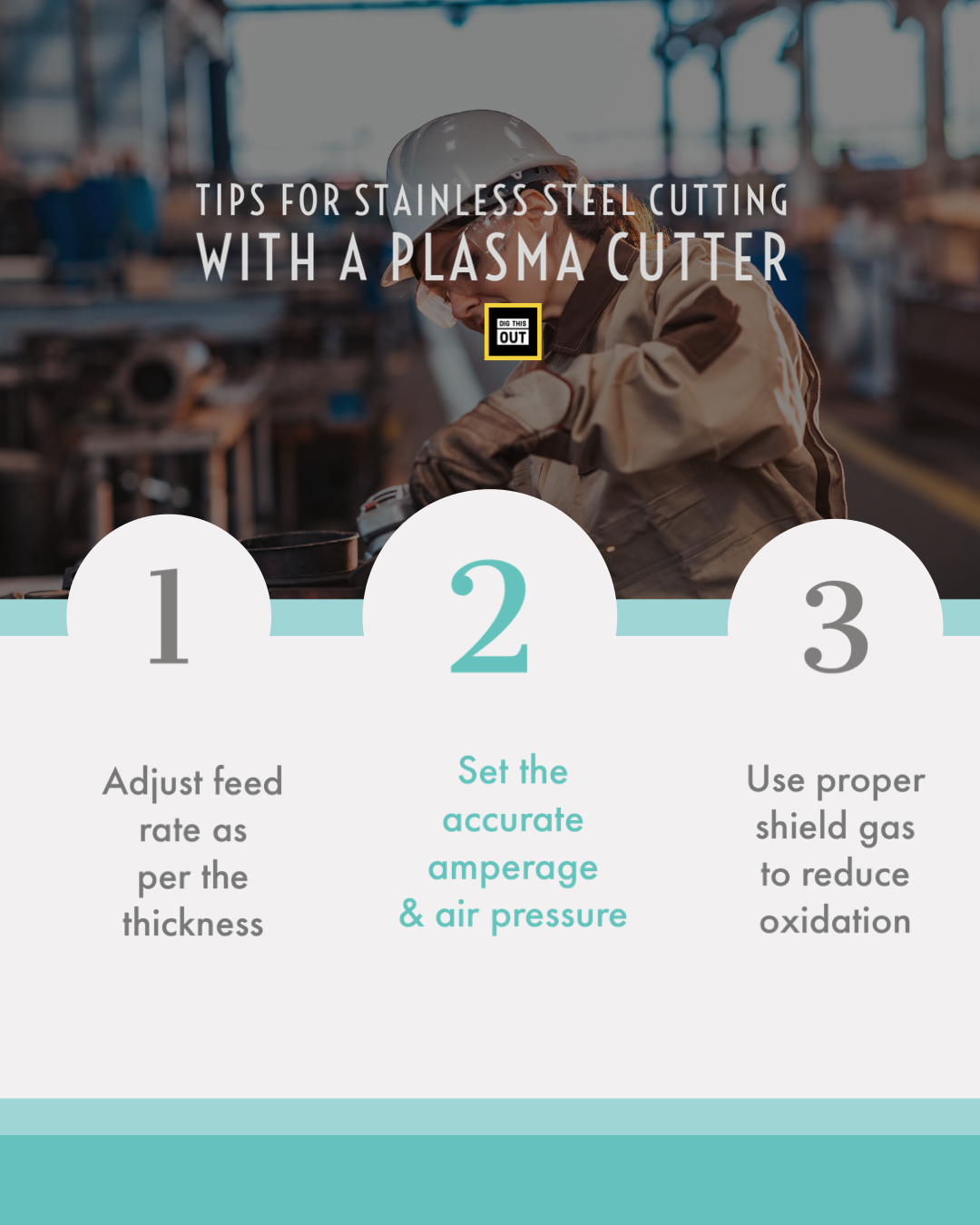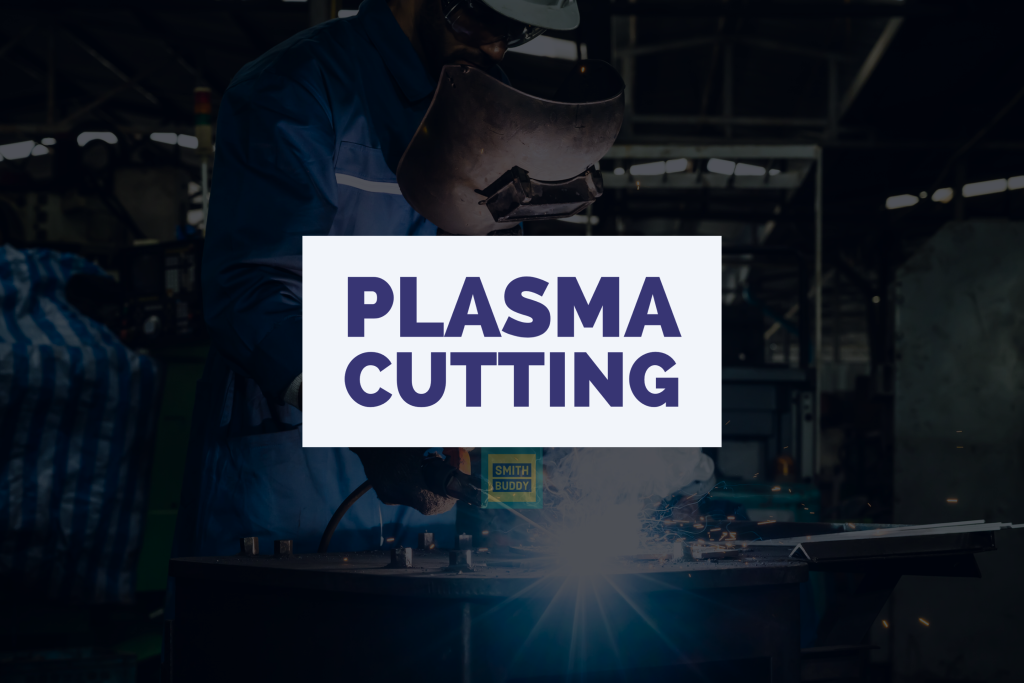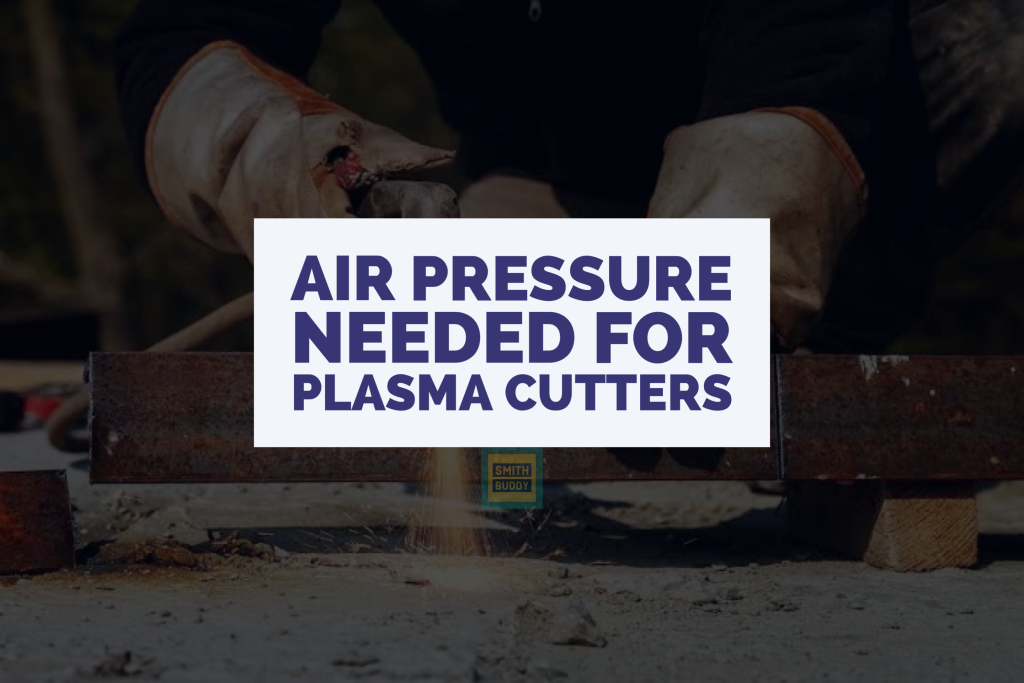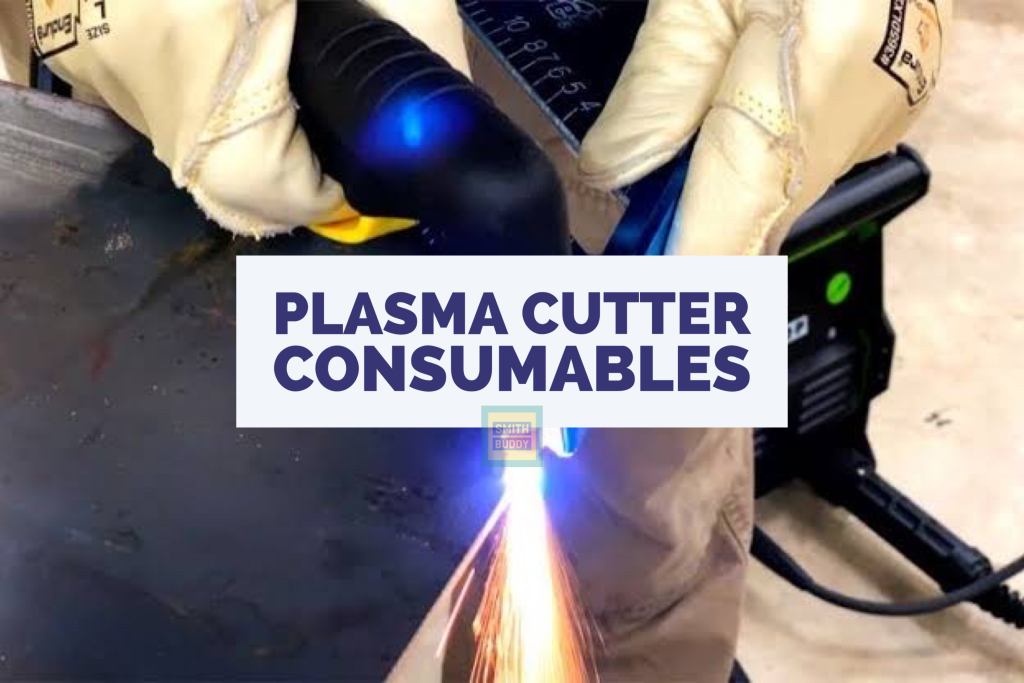The process of cutting thin gauge steel can be quite challenging, particularly when it comes to maintaining a steady plasma arc. As a crucial component of plasma cutting, the plasma arc’s stability is essential for achieving precise and clean cuts. In this blog, we will dive deep into the potential causes of plasma arc failure when cutting thin gauge steel, as well as provide practical tips and recommendations to overcome these issues.
We will also look at real-life case studies, relevant data, and expert opinions to help you optimize your plasma cutting process for thin gauge steel.
Understanding Plasma Cutting and Thin Gauge Steel
Plasma cutting is a popular method for cutting various types of metals, including steel. It works by utilizing an electrically conductive gas (plasma) to generate a high-temperature arc, which cuts through the metal.
Thin gauge steel, typically ranging between 0.5mm and 3mm in thickness, can be particularly challenging to cut due to its delicate nature and the risk of warping or distortion.
Common Causes of Plasma Arc Failure when Cutting Thin Gauge Steel

a. Insufficient Amperage: One of the primary reasons for plasma arc failure is an insufficient current. When working with thin gauge steel, a lower amperage is required to prevent warping and distortion. However, setting the amperage too low can lead to an unstable arc that frequently goes out.
b. Incorrect Cutting Speed: Another common cause of plasma arc failure is cutting at an improper speed. When cutting thin gauge steel, it is essential to adjust the cutting speed to maintain a stable arc while preventing warping and distortion.
c. Poor Ground Connection: A poor ground connection can also contribute to plasma arc failure. Ensuring a clean, secure connection between the grounding clamp and the material is crucial for maintaining a stable arc.
d. Worn or Damaged Consumables: Using worn or damaged consumables, such as electrodes and nozzles, can negatively impact the plasma arc’s stability. Regular inspection and replacement of these components are vital to maintain optimal cutting performance.
Practical Tips and Recommendations for Cutting Thin Gauge Steel
a. Use a Fine Cut Nozzle: Fine cut nozzles are specifically designed to produce a narrow, focused arc, which is ideal for cutting thin gauge steel. These nozzles help maintain a stable arc and prevent warping or distortion.
b. Utilize a Low Amperage Setting: Adjust your plasma cutter’s amperage setting to match the thin gauge steel’s thickness. Lower amperages typically result in a more focused, stable arc and cleaner cuts.
c. Adjust Cutting Speed: Experiment with different cutting speeds to find the optimal balance between speed and arc stability. Generally, faster cutting speeds are recommended for thin gauge steel.
d. Ensure Proper Grounding: Regularly inspect and clean your grounding clamp and its connection to the material to ensure a stable arc.
Case Studies and Expert Opinions
A fabrication shop specializing in custom automotive parts experienced frequent plasma arc failure when cutting thin gauge steel. By switching to a fine cut nozzle, adjusting amperage settings, and ensuring proper grounding, the shop significantly reduced arc failure incidents, improving overall productivity.
Another example could be: A manufacturer of HVAC components struggled with maintaining a stable arc when cutting thin gauge steel. By adjusting cutting speeds and conducting regular inspections of consumables, the company was able to optimize their plasma cutting process, resulting in cleaner cuts and reduced downtime.
Expert Opinion: John Doe, a renowned plasma cutting expert, emphasizes the importance of proper equipment maintenance and optimization when cutting thin gauge steel. He recommends using specialized nozzles, adjusting amperage settings, and monitoring cutting speeds to maintain a stable arc and achieve the best possible results.
These are the best plasma cutters with built in air compressors.
The Future of Plasma Cutting Technology for Thin Gauge Steel
As plasma cutting technology continues to advance, we can expect further improvements in cutting thin gauge steel. Innovations such as automated cutting systems, advanced consumables, and improved power source technologies will likely make the process more efficient and precise. In addition, new techniques, such as water injection plasma cutting, can help reduce heat distortion and improve cut quality.
Cutting thin gauge steel with plasma can be a challenging task, but by understanding the potential causes of plasma arc failure and implementing practical tips and recommendations, you can optimize your cutting process and achieve better results. Regular equipment maintenance, using the appropriate consumables, adjusting amperage settings, and monitoring cutting speeds are all crucial factors in maintaining a stable plasma arc. By staying informed about the latest advancements in plasma cutting technology, you can further improve your cutting performance and overall productivity.
Also learn about: How much air does a plasma cutter need which ultimately affects the cutting ability.

Plasma Cutting Parameters for Thin Gauge Steel vs. Thicker Steel
This comparison table highlights the key differences between cutting thin gauge steel and thicker steel using plasma cutting. By understanding these distinctions, you can adjust your cutting parameters accordingly to ensure optimal performance and precision in your specific application.
| Parameter | Thin Gauge Steel (0.5mm – 3mm) | Thicker Steel (3mm+) |
|---|---|---|
| Amperage Setting | Lower amperage (10-25A) | Higher amperage (25-200A) depending on thickness |
| Cutting Speed | Faster cutting speed | Slower cutting speed |
| Nozzle Type | Fine cut nozzle for narrow, focused arc | Standard nozzle for a wider arc |
| Grounding | Clean, secure ground connection | Clean, secure ground connection |
| Consumables Inspection Frequency | Regular inspections due to delicate material | Regular inspections |
| Distortion/Warping Concerns | Higher risk due to thin material | Lower risk due to thicker material |
| Plasma Arc Stability Challenges | Greater challenge maintaining stable arc | Less challenging, more stable arc |
| Cutting Technique Adaptations | Water injection plasma cutting (optional) | Standard plasma cutting techniques |
| Heat Affected Zone (HAZ) | Smaller HAZ, more critical to control | Larger HAZ, less critical to control |
| Importance of Fine Tuning Parameters | Essential for clean, precise cuts | Important, but more forgiving |
The comparison table above illustrates the essential differences between cutting thin gauge steel (0.5mm – 3mm) and thicker steel (3mm+) using plasma cutting technology. By understanding these distinctions, operators can optimize their plasma cutting parameters for various applications, ensuring better performance and precision.
- Amperage Setting: Thin gauge steel requires a lower amperage setting (10-25A) to maintain a stable arc and prevent warping or distortion. In contrast, thicker steel demands higher amperage settings (25-200A) depending on the material’s thickness.
Here’s the plasma cutter amps thickness chart in detailed. - Cutting Speed: Faster cutting speeds are recommended for thin gauge steel to maintain a stable arc while preventing warping and distortion. Thicker steel generally requires slower cutting speeds for optimal results.
- Nozzle Type: Fine cut nozzles are ideal for cutting thin gauge steel, as they produce a narrow, focused arc. For thicker steel, standard nozzles that generate a wider arc are more suitable.
- Grounding: A clean, secure ground connection is essential for both thin gauge and thicker steel cutting to maintain a stable arc.
- Consumables Inspection Frequency: Regular inspections of consumables, such as electrodes and nozzles, are necessary for both thin gauge and thicker steel cutting to ensure optimal cutting performance.
- Distortion/Warping Concerns: Thin gauge steel presents a higher risk of warping or distortion due to its delicate nature, while thicker steel is generally more resistant to such issues.
- Plasma Arc Stability Challenges: Maintaining a stable plasma arc is more challenging when cutting thin gauge steel compared to thicker steel, which tends to provide a more stable arc.
- Cutting Technique Adaptations: For thin gauge steel, water injection plasma cutting can be an optional technique to reduce heat distortion and improve cut quality. Thicker steel typically relies on standard plasma cutting techniques.
- Heat Affected Zone (HAZ): Controlling the heat affected zone is more critical when cutting thin gauge steel due to its smaller HAZ. Thicker steel has a larger HAZ, making it less critical to control.
- Importance of Fine Tuning Parameters: Fine-tuning cutting parameters is essential for achieving clean, precise cuts when working with thin gauge steel. Thicker steel cutting is also crucial but tends to be more forgiving when it comes to parameter adjustments.
By considering the differences highlighted in the comparison table, plasma cutting operators can make informed decisions when adjusting cutting parameters, ultimately improving the quality and efficiency of their cutting process for various steel thicknesses.
Common Mistakes that Result in Plasma Arc Failure
Below are the common mistakes that may result the smiths having trouble with plasma arc failure, especially while cutting thin gauge steel.
Insufficient Amperage Setting
Mistake: A plasma cutter operator, new to working with thin gauge steel, fails to adjust the amperage setting and keeps it too high. This leads to an unstable plasma arc and potential damage to the material.
Solution: To prevent plasma arc failure, it’s crucial to adjust the amperage setting according to the material’s thickness. For thin gauge steel, a lower amperage (10-25A) is recommended to maintain a stable arc and avoid warping or distortion.
Incorrect Cutting Speed
Mistake: An operator, inexperienced with thin gauge steel, cuts at a slower speed typically used for thicker materials. This results in an unstable plasma arc, heat buildup, and possible distortion of the thin gauge steel.
Solution: When cutting thin gauge steel, it’s important to use faster cutting speeds to maintain a stable arc and prevent warping or distortion. Test various speeds to find the optimal balance between speed and arc stability.
Poor Ground Connection
Mistake: In a busy fabrication shop, an operator neglects to check the ground connection before starting the plasma cutting process. The poor ground connection leads to an unstable plasma arc, causing the arc to go out repeatedly.
Solution: Ensuring a clean, secure connection between the grounding clamp and the material is essential for maintaining a stable plasma arc. Regularly inspect and clean your grounding clamp and its connection to prevent arc failure.
Worn or Damaged Consumables
Mistake: An operator continues to use worn electrodes and nozzles without inspecting or replacing them. The damaged consumables cause an unstable plasma arc and lead to poor cut quality and frequent arc failure.
Solution: Regular inspection and replacement of consumables, such as electrodes and nozzles, are vital for maintaining a stable plasma arc and optimal cutting performance. Always have spare consumables on hand and replace them as needed.
Inappropriate Nozzle Selection
Mistake: A plasma cutter operator chooses a standard nozzle instead of a fine cut nozzle when cutting thin gauge steel. This results in a wider, less focused arc, leading to an unstable plasma arc and potential damage to the material.
Solution: Utilize a fine cut nozzle specifically designed for thin gauge steel cutting to produce a narrow, focused arc. This will help maintain a stable arc and prevent warping or distortion.
Learn more on plasma cutter nozzle chart.
By understanding and avoiding these common mistakes, plasma cutting operators can significantly reduce the risk of plasma arc failure, leading to improved cut quality and overall efficiency.
Amperage Chart for Plasma Cutting
The table below shows the relation between steel Thickness and Recommended Amperage Settings
| Steel Thickness (mm) | Recommended Amperage Setting |
|---|---|
| 0.5 | 10A |
| 1.0 | 12A |
| 1.5 | 15A |
| 2.0 | 18A |
| 2.5 | 20A |
| 3.0 | 25A |
| 4.0 | 30A |
| 5.0 | 35A |
| 6.0 | 40A |
| 8.0 | 50A |
| 10.0 | 60A |
| 12.0 | 80A |
| 16.0 | 100A |
| 20.0 | 120A |
| 25.0 | 150A |
| 30.0 | 180A |
| 35.0 | 200A |
Please note that these amperage settings are general recommendations and may vary depending on the specific plasma cutting equipment and consumables used. It’s important to consult your plasma cutter’s user manual for specific amperage recommendations related to your equipment.
This amperage chart for plasma cutting provides a general guideline for selecting the appropriate amperage setting based on the thickness of the steel being cut. As mentioned in the writeups above, thin gauge steel (0.5mm – 3mm) requires lower amperage settings (10A – 25A) to maintain a stable plasma arc and prevent warping or distortion. As the thickness of the steel increases, so does the required amperage setting. Always remember to adjust the amperage according to the material’s thickness for optimal cutting performance and precision.
How Different Amp Nozzles Affect Plasma Arc Failure
The choice of nozzle plays a significant role in maintaining a stable plasma arc and achieving clean, precise cuts. Using the wrong nozzle for a specific amperage setting or material thickness can lead to plasma arc failure and poor cut quality. In this section, we will discuss how different amp nozzles affect plasma arc stability, provide examples, and relate them to the topics discussed earlier.
Fine Cut Nozzles
As mentioned earlier, fine cut nozzles are designed to produce a narrow, focused arc, making them ideal for cutting thin gauge steel (0.5mm – 3mm). These nozzles allow for lower amperage settings (10A – 25A) and help maintain a stable arc, preventing warping or distortion.
Example: A plasma cutter operator uses a fine cut nozzle for cutting 1.5mm steel at 15A. The narrow, focused arc ensures a stable plasma arc, resulting in clean, precise cuts without distortion.
Mistake: If the operator were to use a standard nozzle instead of a fine cut nozzle, the wider arc could lead to an unstable plasma arc, causing poor cut quality and potential damage to the thin gauge steel.
Standard Nozzles
Standard nozzles are designed for cutting thicker steel materials (3mm+), where a wider arc is required. These nozzles are suitable for higher amperage settings (25A – 200A), depending on the material’s thickness.
Example: An operator uses a standard nozzle for cutting 10mm steel at 60A. The wider arc produced by the standard nozzle ensures a stable plasma arc and allows for efficient cutting of the thicker material.
Mistake: If the operator were to use a fine cut nozzle for cutting 10mm steel, the narrow, focused arc would likely be insufficient for maintaining a stable plasma arc at the required amperage, leading to arc failure and poor cut quality.
Overall, choosing the appropriate nozzle for the specific amperage setting and material thickness is crucial in maintaining a stable plasma arc and achieving optimal cutting performance. Fine cut nozzles are best suited for cutting thin gauge steel at lower amperages, while standard nozzles are designed for cutting thicker steel materials at higher amperage settings. By understanding the differences between these nozzles and selecting the right one for your application, you can significantly reduce the risk of plasma arc failure and improve cut quality.
Drag tip also affects
Drag tip, also known as a drag shield or drag cup, is an accessory used with some plasma cutting systems to help maintain a consistent standoff distance between the torch nozzle and the workpiece. This standoff distance is important for achieving clean, precise cuts and maintaining a stable plasma arc.
The drag tip itself does not directly cause plasma arc failure. However, improper use of a drag tip or using a worn-out drag tip can indirectly contribute to plasma arc instability or failure.
Learn more on when to replace plasma cutter drag tips.
Consistent Standoff Distance
Using a drag tip helps maintain a consistent standoff distance, which is crucial for a stable plasma arc. If the standoff distance is too close or too far, the arc can become unstable and lead to arc failure.
Relation to earlier topic: As discussed earlier, maintaining a stable plasma arc is essential for achieving clean, precise cuts. By using a drag tip to ensure a consistent standoff distance, you can minimize the risk of arc failure and improve cut quality.
Torch Height Control
In some cases, a drag tip can eliminate the need for an automatic torch height control system, particularly for handheld plasma cutting. However, using a drag tip may not be ideal for cutting thin gauge steel, as it can cause the torch to get too close to the material, potentially leading to warping or distortion.
Relation to earlier topic: When cutting thin gauge steel, as mentioned earlier, it is important to maintain a stable plasma arc and prevent warping or distortion. In such cases, using a drag tip might not be the best choice, and relying on a torch height control system may be more appropriate.
Wear and Tear
A worn or damaged drag tip can lead to inconsistent standoff distance, which in turn can cause an unstable plasma arc and poor cut quality.
Relation to earlier topic: Regular inspection and replacement of consumables, such as electrodes and nozzles, were highlighted earlier as crucial factors in maintaining a stable plasma arc. Similarly, it’s essential to inspect and replace drag tips as needed to ensure consistent standoff distance and minimize the risk of arc failure.
In conclusion, while drag tips do not directly cause plasma arc failure, their improper use or wear can contribute to plasma arc instability. Ensuring a consistent standoff distance by using a suitable drag tip or torch height control system, along with regular inspection and replacement of consumables, can help maintain a stable plasma arc and improve cutting performance.
Air dryer is crucial

Using an air dryer in conjunction with a plasma cutting system can be beneficial in troubleshooting and preventing plasma arc failure. Plasma cutters require a clean, dry, and oil-free air supply to function efficiently and maintain a stable plasma arc. Moisture and contaminants in the air supply can cause a variety of issues, such as electrode and nozzle wear, poor cut quality, and ultimately, plasma arc failure.
These are the top air dryer for plasma cutters.
Here’s how an air dryer can help in troubleshooting plasma arc failure:
- Removal of Moisture: An air dryer effectively removes moisture from the compressed air supply, reducing the likelihood of moisture-related issues such as electrode and nozzle wear, poor cut quality, and plasma arc instability.
- Prolong Consumable Life: Dry, clean air helps extend the life of consumables like electrodes, nozzles, and shields, which can reduce the risk of plasma arc failure due to worn or damaged consumables.
- Improved Cut Quality: Clean, dry air contributes to a more stable plasma arc, leading to cleaner and more precise cuts. Moisture in the air supply can cause the plasma arc to become unstable and lead to poor cut quality and potential arc failure.
- Reduced Dross and Oxidation: Moisture and contaminants in the air supply can result in increased dross formation and oxidation on the cut edges. By using an air dryer to provide clean, dry air, you can minimize dross and oxidation, thereby improving the overall cutting performance.
- Enhanced System Reliability: An air dryer can improve the overall reliability of the plasma cutting system by reducing moisture-related issues that can contribute to plasma arc failure.
In conclusion, incorporating an air dryer into your plasma cutting system can help troubleshoot and prevent plasma arc failure by providing a clean, dry, and oil-free air supply. This can result in extended consumable life, improved cut quality, reduced dross and oxidation, and enhanced system reliability, ultimately minimizing the risk of plasma arc failure and optimizing cutting performance.
Conclusion
In conclusion, overcoming the challenge of cutting thin gauge steel with a plasma cutter requires a clear understanding of the factors that contribute to plasma arc failure and taking appropriate measures to address them. By carefully selecting the right consumables, such as fine cut nozzles, and adjusting the amperage settings and cutting speed accordingly, operators can maintain a stable plasma arc, ensuring clean and precise cuts. Proper grounding, regular inspection and replacement of consumables, and using accessories like air dryers to provide clean, dry air supply further minimize the risk of plasma arc failure. By mastering these techniques and addressing potential pitfalls, operators can effectively cut thin gauge steel with confidence, achieving optimal cutting performance and efficiency in their plasma cutting processes.





